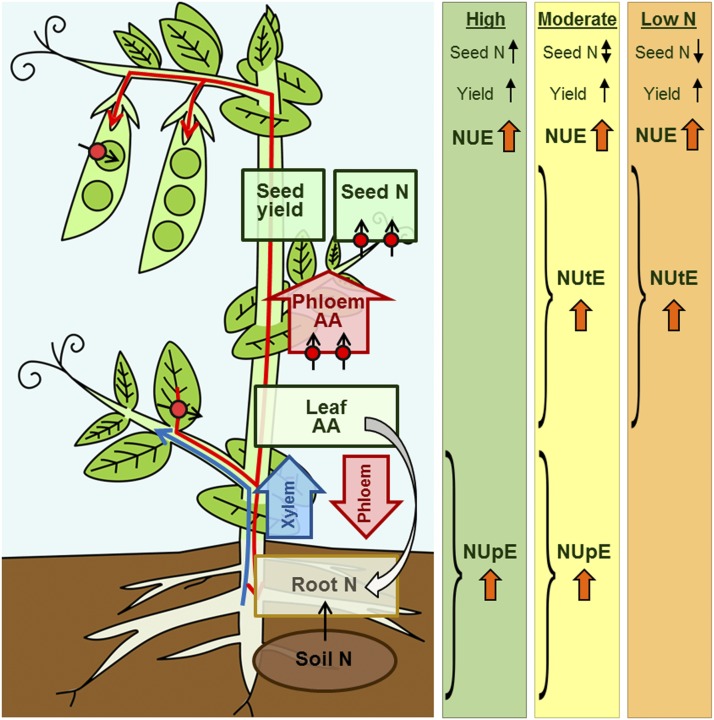Figure 6.
Overview model of AAP1 overexpression in pea and the effects on N uptake, allocation, and use under high N and N-deficient growth conditions. Left, In previous work, it was found that increased AAP1 transporter expression in the phloem and seeds of pea plants grown under very high N supply results in (1) increased N partitioning from source leaves to sinks, affecting seed development, and (2) improved N import into seed cotyledons, influencing seed N/protein level (Zhang et al., 2015). Enhanced leaf-to-seed N transport positively affected root-to-shoot N allocation in the xylem, probably due to feedback regulation through root-shoot signaling via the phloem (large white arrow). Arrows with red circles point to increased expression of AAP1 transporters in the phloem and seeds. Right, AAP1-OE and wild-type plants were grown with low (2 g of N per week), moderate (4 g of N per week), or high N (8 g of N per week) supply. Arrows indicate relative change in AAP1-OE plants compared with the wild type. Under high N nutrition, shoot N supply, seed yield, and seed N content were increased in AAP1-OE pea plants compared with the wild type. The transgenic plants displayed improved NUE due to increased NUpE, but NUtE was unchanged. When N fertilization was reduced by half (moderate N), AAP1-OE plants continued to outperform wild-type plants with respect to N allocation to sinks and seed yield, but seed N/protein levels were unchanged. Under these strongly reduced N conditions, NUE of AAP1-OE plants was increased significantly due to increases in both NUpE as well as NUtE. Under extreme N deficiency (low N), AAP1-OE plants still produced higher seed yields, although with lower N content. NUE was increased significantly in the N-starved plant due to more efficient N utilization for seed production, but NUpE was not changed. Overall, this model supports that manipulation of source-to-sink N transport is an effective strategy to improve plant NUE and plant productivity independent of the N treatment.

